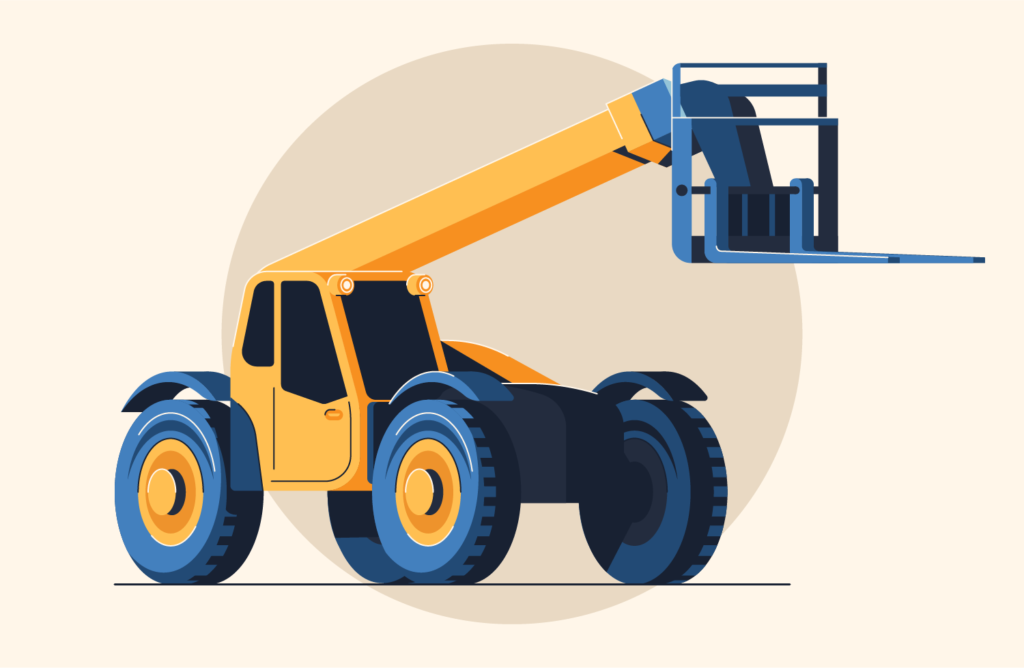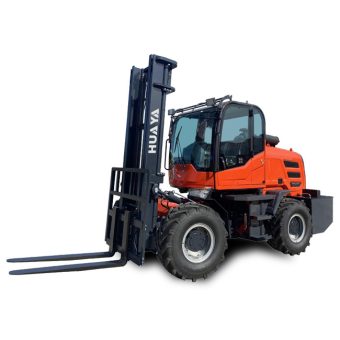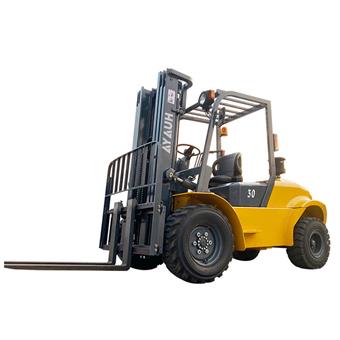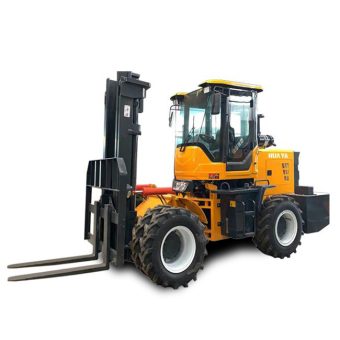
Notícias
O maquinário pesado desempenha um papel fundamental na construção, na agricultura e em ambientes industriais. Entre as várias opções de equipamentos, as empilhadeiras para terrenos acidentados e os manipuladores telescópicos costumam ser comparados devido à sobreposição de suas funcionalidades. Mas será que eles são iguais?

As empilhadeiras para terrenos acidentados são veículos robustos, com tração nas quatro rodas, projetados para operar com eficiência em superfícies irregulares ou desafiadoras. Essas máquinas são equipadas com pneus pneumáticos e oferecem estabilidade excepcional em ambientes difíceis.
Um telehandler, também conhecido como manipulador telescópico, combina os recursos de uma empilhadeira com um guindaste. Ele apresenta uma lança telescópica que permite um alcance maior, tornando-o ideal para tarefas de elevação vertical e horizontal.
As empilhadeiras para terrenos acidentados são construídas com uma estrutura robusta para enfrentar condições difíceis, enquanto os manipuladores telescópicos são projetados para oferecer versatilidade e alcance.
Embora ambas as máquinas lidem com cargas pesadas, os manipuladores telescópicos geralmente têm uma capacidade de elevação maior, especialmente para cargas elevadas.
As empilhadeiras para terrenos acidentados são excelentes em canteiros de obras, serrarias e zonas industriais onde a estabilidade e a resistência são fundamentais.
Os manipuladores telescópicos costumam ser preferidos para tarefas agrícolas, operações de armazém e projetos de construção que exigem maior alcance.
Ambas as máquinas são hábeis na navegação em terrenos acidentados, mas as empilhadeiras oferecem maior estabilidade em terrenos irregulares devido à sua distribuição de peso.
Os manipuladores telescópicos são equipados com sistemas de suspensão avançados, permitindo uma operação suave em terrenos variados.
As empilhadeiras para terrenos acidentados utilizam tração nas quatro rodas para maior controle, especialmente em superfícies desafiadoras.
Os manipuladores telescópicos oferecem maior agilidade com recursos de direção e pivotamento de caranguejo.
Contrapesos integrados e estruturas robustas garantem que as empilhadeiras mantenham a estabilidade durante o levantamento de peso.
Os manipuladores telescópicos são equipados com sistemas de gerenciamento de carga e estabilizadores, reduzindo o risco de tombamento.
Os manipuladores telescópicos podem realizar muitas das mesmas tarefas, mas são mais adequados para aplicações que exigem maior alcance.
Sim, os manipuladores telescópicos normalmente têm custos iniciais mais altos devido a seus recursos avançados.
As empilhadeiras geralmente são mais fáceis de operar, enquanto os manipuladores telescópicos exigem mais treinamento devido à sua versatilidade.
Setores como construção, manufatura e madeireiro dependem muito de empilhadeiras para terrenos acidentados.
Muitos manipuladores telescópicos modernos vêm com opções ecologicamente corretas, como modelos híbridos ou elétricos.
Ambas as máquinas oferecem uma vida útil de 10 a 20 anos, dependendo do uso e da manutenção.
Compreender as diferenças entre empilhadeiras para terrenos acidentados e manipuladores telescópicos é fundamental para selecionar o equipamento certo. Embora compartilhem algumas semelhanças, seus recursos exclusivos atendem a necessidades operacionais distintas. Avalie suas necessidades cuidadosamente para tomar uma decisão informada.


